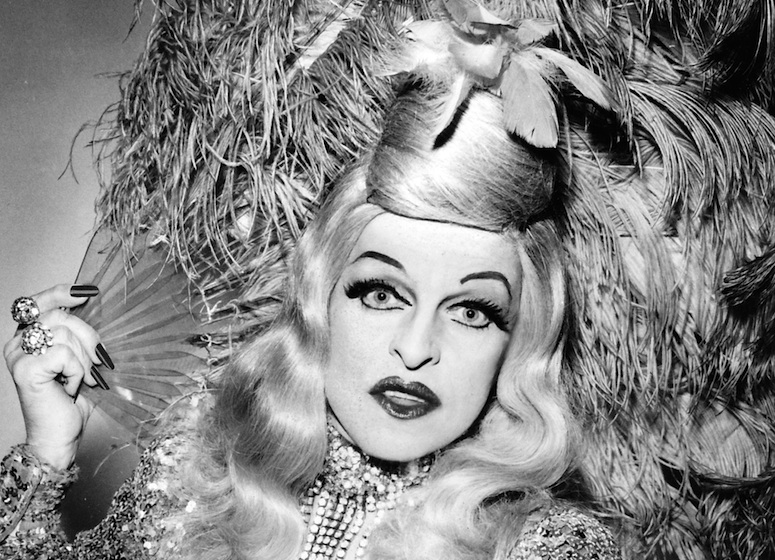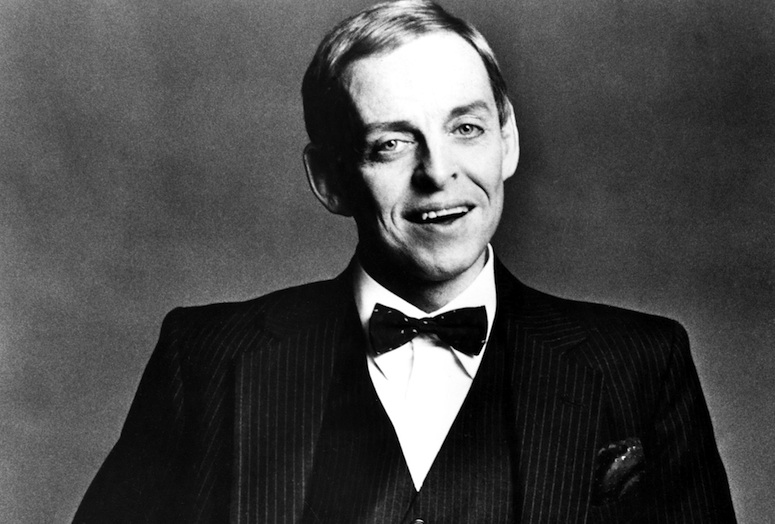
There are drag queens, there are female impersonators, and then there’s self-described “Male Actress” Charles Pierce.
Born in July 1926, Pierce started out playing small gay clubs in San Francisco during the 1960s where his take on Bette Davis, Mae West, Tallulah Bankhead, Carol Channing, and many other famous actresses, became the stuff of local legend.
In 1978, after Ann-Margret hired Pierce as her opening act at Caesars Palace in Las Vegas, he went on to achieve international acclaim and performed around the country and in Europe until his retirement in 1990.
Kirk Frederick was Pierce’s dresser, stage manager, producer, publicist, and good friend for more than 20 years. He shares his memories of their time together in his newly-published book, Write That Down! The Comedy of Male Actress Charles Pierce.

Kirk Frederick spent 20 years assisting Charles Pierce that led to writing a book about his experiences.
Frederick will appear from 4-5 p.m. May 28 at Destination PSP in Palm Springs where he will be interviewed by film critic Bill Harris. Pierce's career will be discussed and video highlights will be presented.
Recently, Frederick spoke with Palm Springs Life about the book and Pierce’s singular brilliance.
What was important to get across to readers with this book about Charles?
Kirk Frederick: It started as my wanting to credit a lot of material I was hearing other comics and even friends using. And I thought, Charles isn’t getting credit for all these funny lines he used and the main thing was to write down all the material. I had basically done that working with him backstage. He would ad lib and I’d hear, ‘Write that down.’ So I had a lot of notes from the shows. And after the ‘Write that down’ started to get tiresome we began videotaping the shows, so I had a lot of videotapes and was able to compile all of the material he ever did and that was the primary reason for writing the book.
Also, historically, he was one of the pioneers of the whole drag movement and he really was good at impressions and impersonations. I mean, the guy had a terrific career and I wanted to have that remembered and get the memory of him established with a whole new generation.
You met Charles in San Francisco in 1969 when you were both cast members of the play “Geese.” How did you come to work for him?
KF: We just became friends when we were working in the show. A few months later, after the show was running well, he was itchy to do his nightclub act. So on the dark night of the show, in that same space where “Geese” was playing, he started doing his act. And I said, ‘I’m sort of a stage manager, I’d be happy to help.’ He wanted to make his costume changes faster—that was always the thing that slowed him down.
By the time he took his show to Ciro’s [in Los Angeles] I’d become an integral part of the Charles Piece Show and we worked together for the next 20 years on and off. Whenever he had an engagement I would go and get it ready and teach the dressers how to change his clothes quickly.
You and Charles were apart for about three years before you reunited with him for the rest of his career. Did that have an impact on your relationship?
KF: He got an engagement at Olympus, a club in San Francisco, in 1974. Right at the same time came this group off the street called Beach Blanket Babylon [now the longest running musical revue in live theater history]. The owner of Olympus decided we could do two shows a night—Beach Blanket and Charles Pierce as sort of a double bill. I was stage managing Charles and Beach Blanket didn’t have a stage manager so I started doing both. And at the end of that engagement, Charles went back to LA and Beach Blanket moved to a new club and I was asked to move with them to become their production stage manager. But we remained friends and kept in touch.
By then, I owned my own graphic arts company in San Francisco so I didn’t have time to travel everywhere. But I became his kind of manager, production coordinator, and publicist. So I still worked really close with him, just not always backstage. If anything the time apart strengthened the relationship. It made us realize how much we missed each other and liked working together.

Charles Pierce as Mae West.
Charles was good friends with Bea Arthur. How and when did they meet?
KF: Bea came to see his show at Studio One. Estelle Getty and Charles were old friends and Estelle kept telling Bea, ‘You’ve got to see this guy, he’s very funny.’ And they hit it off—I swear to God, they were the same person. It was just an uncanny type of friendship from day one, from the first night she came backstage to meet him they just went crazy. And all through both their careers they remained really close. And when he retired they hung out and traveled together.
Harvey Fierstein cast Charles as “Bertha Venation” in the 1988 film version of Torch Song Trilogy. Did the two of them have a personal relationship prior to that?
KF: Harvey became a big fan of Charles at nightclubs in New York and considered him the sort of elder statesman of the gay world and wanted to include him in the movie somehow. He basically wrote that part of Bertha Venation for Charles and then let him write and do his own material. And it’s wonderful that Charles had that on film. I think it was one of the highlights of his career.
What might surprise people about Charles?
KF: That he was just such a regular guy offstage. He came off as so campy and so over-the-top as a performer that when you met him backstage you weren’t even sure it was the same guy. Kind of a very normal face and stature and looked like a banker when he combed his hair. And so modest, shy, and quiet. He loved the fact that he was rarely recognized because he never appeared as himself on stage.
What kind of interests did he have outside of performing?
KF: Not much — he really didn’t do much more than go out to dinners. He really did love staying home and watching movies on television — I swear to God that was his whole life. When you’re working that hard and you’re doing two shows a night, it wears you out. Surprisingly, he was very low key — loved to take five to six weeks off each year and travel. He spent a lot of time with his mother in upstate New York. And he would work on the act a lot. His show, and his performance, was really his whole life.

Charles Pierce without the makeup.
Did he see himself as having an impact on the gay community?
KF: I don’t think so. I know he knew that he was popular. As early as 1973, I recognized that he was becoming this crossover artist and I did an article for a gay magazine called “Vector” about him being a voice for the gay community and that all of the sudden it was okay to be gay. He knew he was at the forefront of the crossover, that he was entertaining straight people in a way they loved and that really spoke well for the gay population. He did know that he was making what had specifically been gay entertainment more palatable, more acceptable, and certainly more popular with a straight audience.
How long ago did you start writing the book? Was there a particular timing for its release?
KF: It took me 10 years. I was in no hurry, it was just something I knew I wanted to do. I realized about three years ago that I better get this done. I didn’t realize that the book would have almost the same crossover appeal as Charles did.
What is important for the younger gay generation to know about Charles?
KF: That is a really hard question to answer. I just wish they’d know about him historically and his place in the history of drag, of performance, of gay crossover to straight audiences. And I don’t want there to be anything that the younger generation thinks is wrong with this art form. I wanted them to look at this guy who made a successful career of this late in the 20th century and was done by 1990.
And now we have the RuPauls, and the Charles Buschs, and the Lypsinkas and a lot of drag which is legit, but there doesn’t seem to be anyone like Charles Pierce. I hoped that by doing this book I would inspire somebody to say, ‘I could do this, I could even take this material and make my own act out of it.’ I think impressionism is a unique talent and very few people have it. I just wanted to share his genius with a generation that I knew had never heard of him.
Kirk Frederick, free book signing, 4-5 p.m. May 28, Destination PSP, 170 Palm Canyon Drive, Palm Springs, www.facebook.com/charlespiercewritethatdown
Like what you're reading? Then "Like" us on Facebook and "follow" us on Twitter.